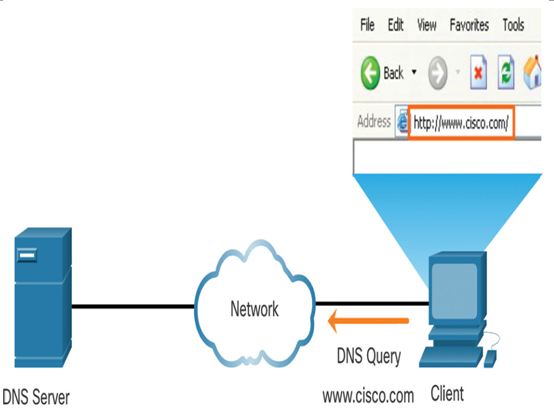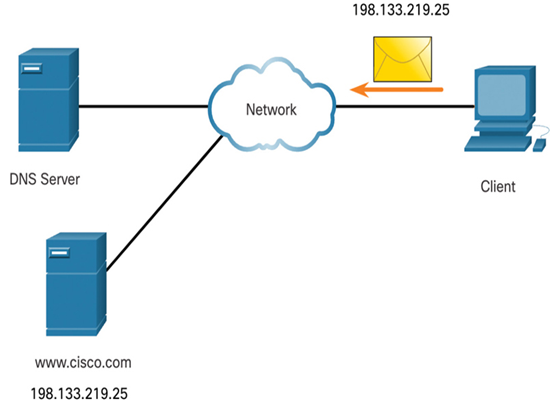Upon completion of this chapter, you will be able to answer the following questions:
• How does DNS operate?
• How does DHCP operate?
This chapter uses the following key terms. You can find the definitions in the Glossary.
Dynamic Host Configuration Protocol (DHCP)
fully-qualified domain names (FQDNs)
Hi there. While Olcay and Abay are working together, Olcay needs to use the nslookup command to verify the current status of the name servers. Olcay takes this opportunity to see what Abay knows about DNS and DHCP services. Abay explains that The DNS protocol defines an automated service that matches resource names with the required numeric network address. He also explains DHCP. Rather than using static addressing for each connection, it is more efficient to have IPv4 addresses assigned automatically using DHCP. Olcay is impressed with Abay’s knowledge! He has really been doing his homework.
Are you able to explain how DNS and DCHP services operate? I bet this module will help. Keep reading!
Video – Domain Name System (25.1.1)
Refer to the online course to view this video.
There are other application layer-specific protocols designed to make it easier to obtain addresses for network devices. These services are essential because it would be very time consuming to remember IP addresses instead of URLs or manually configure all of the devices in a medium to large network. This topic goes into more detail about the IP addressing services, DNS and DHCP.
In data networks, devices are labeled with numeric IP addresses to send and receive data over networks. Domain names were created to convert the numeric address into a simple, recognizable name.
On the internet, fully-qualified domain names (FQDNs), such as http://www.cisco.com, are much easier for people to remember than 198.133.219.25, which is the actual numeric address for this server. If Cisco decides to change the numeric address of www.cisco.com, it is transparent to the user because the domain name remains the same. The new address is simply linked to the existing domain name and connectivity is maintained.
The Domain Name System (DNS) protocol defines an automated service that matches resource names with the required numeric network address. It includes the format for queries, responses, and data. The DNS protocol communications use a single format called a message. This message format is used for all types of client queries and server responses, error messages, and the transfer of resource record information between servers.
The following are the steps in the DNS process.
Step 1. The user types an FQDN into a browser application Address field, as shown in Figure 25-1.

Figure 25-1 Step 1: URL is Enter in Browser
Step 2. A DNS query is sent to the designated DNS server for the client computer, as shown in Figure 25-2. This server is known as the Local DNS server.

Figure 25-2 Step 2: DNS Query Sent to DNS Server
Step 3. The DNS server matches the FQDN with its IP address, as shown in Figure 25-3.

Figure 25-3 Step 3: DNS Server Matches FQDN to IP Address
Step 4. The DNS query response is sent back to the client with the IP address for the FQDN, as shown in Figure 25-4.

Figure 25-4 Step 4: DNS Server Responds to DNS Query
Step 5. The client computer uses the IP address to make requests of the server, as shown in Figure 25-5.

Figure 25-5 Step 5: Client Sends Web Request Using IP Address
